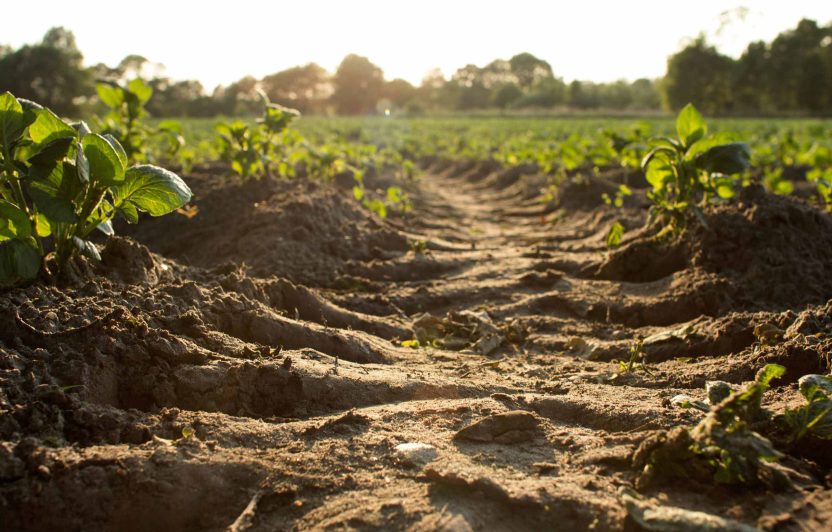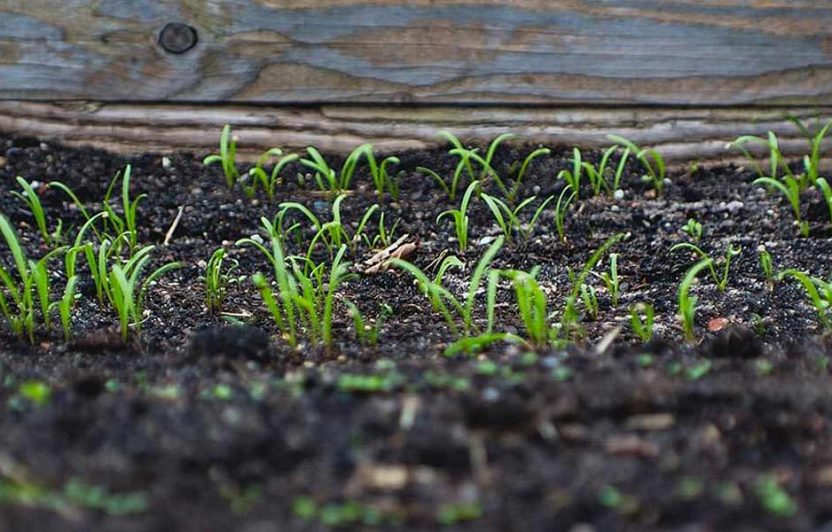Today, the very last corner of the earth has been explored and surveyed, and almost all living creatures are known and recorded. Or are they? Not exactly: there is a territory inhabited by thousands upon thousands of different creatures that we know very little about: how do they communicate? What is their social life like? There is no need for an expedition ship or a rocket to explore this area, because it is right under our feet. We are talking about our soil.
Around 25% of all living creatures live in the soil, but we are only familiar with 1% of them. They are small and minute organisms such as bacteria, fungi, nematodes, earthworms, insects, arachnids or millipedes.
Composers and farmers as soil researchers
You don’t have to be a scientist to obtain an insight, or rather an audio sample, of this world. 182 people did so in 2020: amateur gardeners, farmers, musicians, composers, journalists or entire school and kindergarten classes. As part of the Citizen Science Sounding Soil project – jointly organised by Biovision and other organisations (see box) – they were provided with a recording device and a microphone that enabled them to listen to the soil as much as they wanted for a week.
The participants heard quite a lot of things, as described by Marilena Schumann, project worker at Biovision for Sounding Soil: crawling, slurping, scratching, and even “honking” or “engine noises”. Not that animals are suspected of riding around in the soil on motorbikes, but a Citizen Science participant recorded noises that sound amazingly as if they are, which is why she christened them bike animals. Sometimes the engine doesn’t seem to start properly either. Listen for yourself!
Audio-Aufnahmen des Bodens in Neuheim und Corcelles (Schweiz).
According to Marilena Schumann, it is impossible to say which animal is being heard here. “When it comes to assigning sounds to animals, we are still at the very beginning,” says Marcus Maeder, researcher, sound artist, composer and originator of the project. And this is not the focus of his research. He is interested in the number and variety of sounds in the soil – and the conclusions that can be drawn about the impact of soil use on biodiversity. He and his team were successful in their search, as Maeder indicates: “We have found evidence that the more intensively the soil is used, the less activity there is in it.”
Marilena Schumann came to the same conclusion after evaluating all the Citizen Science contributions from 2020. Participants were free to decide how much time they wanted to spend recording and where, but they were asked to do what was called a “24-hour recording”. In other words, they had to set their device to record five minutes every hour over the course of a day. Schumann made some interesting observations on listening to these recordings. She was amazed to discover how much activity, and especially how many different communication sounds, could be heard in recordings in a vineyard. She was even more surprised because the recordings were made at the end of June and beginning of July, when the soil was already very dry and you would actually expect little noise. In dry conditions, soil animals retreat into deeper layers of the earth and we can no longer hear them, Marcus Maeder confirms.
A lot of communication going on
“The high levels of activity could be related to the fact that the wine is grown organically, and little or no weeding takes place under the vines,” Marilena Schumann suspects. She detected a particularly large variety of communication sounds in the recordings from late June/early July in general – despite the dryness: “I wonder if this is an indication that this is mating season for soil animals too. We just don’t know.” Given the current state of research, much remains conjecture. But the Biovision project worker emphasises: “The amazing variety of communication sounds in the recordings fascinated me. Listening to the soil immerses you in another world.”
One impressive finding from the recordings was that there is also a great deal of communication going on above ground. In one recording, an animal can even be heard apparently responding to the sound of another animal:
Audio-Aufnahmen des Bodens in Heitersheim (Schweiz).
Squeaking ants
Marilena Schumann tells us that it is impossible to say which animals are communicating here. However, according to Marcus Maeder, we know that most communication sounds are produced by animals rubbing body parts together or vibrating their bodies. The same applies to red garden ants. Maeder was able to identify their sounds when examining soil samples, as they only occurred in the one sample that contained ants. Citizen Science participants have had the same kind of listening experiences. The ants make a very specific sound, a kind of squeaking:
Quitschende Ameisen im Boden von Neuheim.
Marcus Maeder and his team published a study last year in which they investigated the correlation between acoustic diversity and species richness of the organisms in the soil. They are currently working on another study to expand their findings. What Maeder notices time and again in his research is that it seems to be very important for soil organisms that the soil is always overgrown and covered – because the organisms feed on remains of plants or other organisms that live in the ground. But which animals make which sounds, and why? Many questions about the life beneath our feet remain unanswered. One impressive outcome of the Sounding Soil’s Citizen Science project is that it demonstrated without a doubt that the soil really is alive. And the crucial thing when it comes to this life is that it depends on the way we treat the soil.
Sounding Soil
Sounding Soil is an inter- and transdisciplinary research, awareness-raising and art project investigating the acoustics of soil ecosystems. It is a collaborative project of the Biovision Foundation, the Zurich University of the Arts ZHdK, the Swiss Federal Institute for Forest, Snow and Landscape Research WSL, Agroscope, ETH Zurich and the Research Institute of Organic Agriculture FiBL. More information about the project can be found here.






